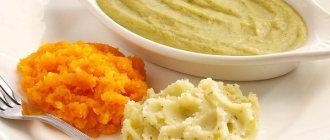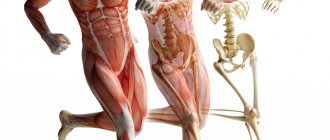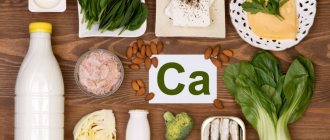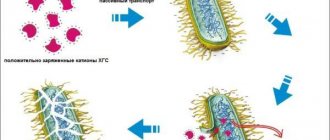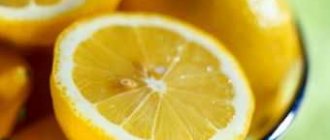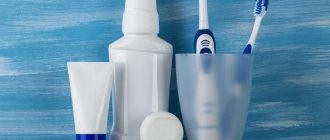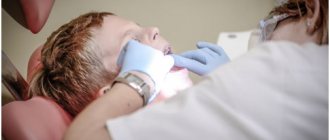A jaw fracture is one of the most common injuries. It occurs in 35% of all fractures. Most often the lower jaw is damaged. This is accompanied by a violation of chewing and swallowing functions. In this article we will talk about what nutrition should be like in case of a jaw fracture.
Proper nutrition promotes rapid recovery
First aid
An obligatory step is to apply a sling-shaped bandage to the jaw.
A broken jaw causes serious harm to health. Pre-medical intervention should be immediate.
First aid for a broken jaw is as follows:
- Stop bleeding. A tampon made from a clean napkin should be pressed onto the wound. If blood continues to flow, an ice compress should be applied to the fracture site.
- Anesthesia. It is allowed to inject the patient with 500 mg of Analgin, 750 mg of Naproxen, or 1-2 ml of Revalgin.
- Immobilization of the jaw. To do this, you can use a ruler or a plate. You can secure a homemade splint using a sling bandage.
Note! If necessary, the patient is given cardiopulmonary resuscitation. After providing first aid, you need to call an ambulance or transport the victim yourself to the hospital. Further treatment is carried out in a hospital.
What does a doctor do
Therapeutic tactics depend on the degree of injury
Therapy consists of the following:
- combination of jaw bone fragments;
- fixation of debris using a special tire;
- creating optimal conditions at the site of injury for bone restoration;
- carrying out restorative, antimicrobial and preventive treatment.
If necessary, the doctor performs surgery. If the destruction of the jaw bone leads to facial injury, complex plastic surgery is performed. During the operation, jaw and facial prostheses are used.
Stages of recovery after a fracture
In order not to aggravate the situation and cause even more harm to the body, it is necessary to treat a fracture at home in accordance with a clear sequential scheme. It provides the following main recovery stages:
- The first stage begins immediately after the plaster is removed. At this time, the damaged area needs to be rubbed and massaged. Start exercises and massage almost immediately, but they should be light and not overload the still weak muscles. To stimulate recovery processes, local preparations in the form of a gel or cream can be applied to the area, but only as prescribed by a doctor.
- The second stage begins when the muscles, ligaments and other structures become a little stronger. To increase tone and motor activity, begin exercise therapy, physiotherapy, and perform more complex and intense exercises.
- The third stage is the final one. During this period, you can already increase your activity and go for long walks. The doctor can give a referral for treatment at a sanatorium or health center.
Nutritional Features
A mandibular fracture can be double or triple. A person who has received such an injury is unable to eat solid food. Violation of chewing function leads to inhibition of reparative processes of bone tissue.
The main task of medical personnel is to organize adequate nutrition. The main feeding methods are presented in the table.
Table 1. Types of feeding:
| Feeding method | Description |
| If a person cannot open his mouth, then feeding is done using a special sippy cup equipped with a tube made of Teflon or rubber. The food temperature is 45-50 degrees. Food is served repeatedly, in small portions. |
| The device is inserted into the stomach through the lower nasal passage. Food is introduced using a special funnel or syringe. |
| Food is introduced into a vein by drip. The indication for such feeding is a violation of swallowing function. |
| The patient is given nutritious enemas. The indication for such feeding is the inability to take food enterally. |
Note! Food is supplied using a tube for 1.5-2 weeks. After this, the patient is transferred to physiological oral feeding.
Working with gait
As part of rehabilitation after a leg injury, it is necessary to work on restoring gait. One of the most effective options is exercise on an exercise bike, to which the patient must be allowed by a doctor if there are no contraindications.
In addition to training on the simulator, it is also important to perform special exercises:
- grab a small object with your toes and hold it suspended;
- roll the ball with the foot of the injured limb;
- roll from toes to heels and back;
- walk backwards, sideways.
Classes should be continued until the patient’s motor functions are completely restored and swelling and pain go away.
Features of the second table
It is prescribed when the patient can open his mouth freely. Food should be served liquid, well-cooked, thoroughly pureed or passed through a blender. Number of meals - 5-6 times/24 hours.
A brief description of the second table is as follows:
- the consistency of the dishes is sour cream;
- calorie content - depends on the possibility of combining other diets;
- The period is transitional to the common table.
Principles of nutrition
What to eat if you have a broken jaw? The tablet provides information about what the patient’s menu should include.
Table 2. Basic principles of nutrition:
| What to include on the menu | Description |
| Food should be rich in minerals, vitamins, amino acids, carbohydrates, fats and proteins. |
| It is allowed to eat high-quality pasta. |
| It is recommended to eat oatmeal and buckwheat. |
| You can drink raw chicken eggs. |
| Fresh fruits and vegetables should be included in your diet. |
| Preference should be given to olive oil. |
Note! In order to increase nutritional value, it is recommended to dilute pureed food with broth or milk.
Food for the period of splinting
The table tells you what you can eat if you have a fractured jaw during the period of splinting.
Table 3. Menu for the splinting period:
| Product | Description |
| It is advisable to cook it from poultry meat. The broth should be nourishing and rich. |
| All ingredients need to be boiled well and then passed through a blender. An essential component of the soup is cheese. |
| Before preparing juice, you need to remove the skin from tomatoes. |
| It is recommended to eat fermented baked milk and kefir. |
Drinking whole milk is not recommended. This is due to the viscosity of the product, which quickly coagulates and contributes to the “stickiness” of saliva. It is better to add milk to tea or coffee. The grains of pureed solid food should resemble semolina.
Recovery period
The duration of the rehabilitation period for a fracture of the lower jaw is 30-60 days.
The patient's menu should include foods enriched with:
- calcium;
- zinc;
- phosphorus;
- vitamins.
Every day the patient should eat at least 150 grams of meat. You need to first boil it, then grind it in a blender, then dilute it with bone broth. This paste contains useful microelements that help accelerate the healing of deformities.
What to give up
The label lists foods that should be avoided during treatment.
Table 4. Prohibited products:
| Product | Why is it harmful? |
| Prevents cells from forming cartilage and bone tissue and promotes bone destruction. |
| Inhibits the process of calcium absorption. The element does not have a beneficial effect on the body and is quickly eliminated from it. |
| High-calorie products that do not contain beneficial elements. |
| The product contains “bad carbohydrates”. |
Foods to Eat and Avoid
It is necessary to correctly create a menu that includes products containing the largest number of necessary elements.
You need to enter the following products into the menu:
- sea fish;
- milk, fermented milk products;
- cheeses;
- nuts;
- dried fruits;
- cabbage;
- seeds;
- legumes;
- liver;
- seafood;
- caviar.
Their use helps restore the body after a fracture, they strengthen the body as a whole.
There are foods that you should avoid during your recovery. You need to understand why you should not use this or that product.
Use of enteral formulas
The products contain amino acids and vitamins necessary for the patient.
For a fracture of the lower jaw, it is recommended to eat the following enteral mixtures:
- Nutrilon;
- Nutrizon;
- Nutridrink.
The mixtures are available in dry and liquid form. Dry products must be diluted in boiled water.
Note! Enteric mixtures have a beneficial effect on the process of bone fusion. The beneficial elements contained in this diet are well absorbed by the body.
Nutrilon mixtures
When producing enteric mixtures, the manufacturing company uses the innovative Immunofortis system. The products are produced in jars of 400 and 900 grams. The best enteric mixtures for people with a jaw fracture are presented in the table.
Table 5. The best Nutrilon mixtures:
| Product | Description |
| It contains special fatty acids. |
| The mixture is recommended for people suffering from lactose intolerance. |
| The composition contains lactic acid bacteria, which have a beneficial effect on the functioning of the gastrointestinal tract. |
| The product prevents constipation. |
Nutrizon mixtures
A nutritional mixture with a high protein concentration and a balanced composition.
A brief description of this food looks like this:
- calorie content - 100 kcal/100 grams;
- proteins - 4 grams;
- fats - 3.9 grams;
- carbohydrates - 12.3 grams.
The best Nutrizon mixtures are presented in the table.
Table 6. Recommended Nutrizon mixtures:
| Product | Price |
| 520 rubles. |
| 554 rubles. |
| 632 rubles. |
Nutridrink mixtures
The table shows the main flavors of Nutridrink products.
Table 7. Nutridrink mixtures:
| Taste of the drink | Description |
| An excellent alternative for people who do not perceive flavoring additives. The product is an excellent source of protein. Safe for people hypersensitive to lactose. |
| The mixture covers 1/4 of the patient’s need for protein and beneficial nutrients. Helps restore strength, improves tone, improves mood. |
| Contains all the beneficial elements necessary for the patient. Liquid protein is quickly absorbed by the body. |
| The mixture helps restore strength, improves mood and improves tone. |
| The mixture normalizes the functioning of the gastrointestinal tract. Especially recommended for elderly and young patients. |
| Contains dietary fiber that improves intestinal function. The mixture also contains vitamins A, C, D, and replenishes magnesium and calcium deficiencies. |
External means
After the cast is removed, the patient may experience pain and swelling for a long time. To get rid of these unpleasant manifestations of injury, the doctor may prescribe ointments and gels that relieve discomfort. Such drugs have important effects:
- analgesic – relieves pain, improves motor abilities;
- anti-inflammatory – improves tissue condition, relieves inflammation, redness, swelling;
- muscle relaxant – promotes muscle relaxation, relieves excessive tone, improves the effect of painkillers;
- regenerating – stimulates restoration processes, activates metabolism in damaged tissues.
External medications have much less negative effects than oral medications. Therefore, many doctors prefer ointments and gels with local action.
Recommended vitamins
When a jaw fracture occurs, the patient needs the following vitamins:
- Group B;
- C;
- D;
- K.
The human body also needs magnesium, calcium, zinc and phosphorus. Vitamins for jaw fractures can be obtained not only from food. Additionally, taking tablet medications is allowed. The tablets also need to be crushed thoroughly.
Vitamins B1
This vitamin is also called thiamine. It does not accumulate in the body. It must be received daily.
The daily requirement for vitamin B1 looks like this:
- adult men - 1.5-2.4 mg;
- women - 1.4-2.3 mg;
- children - 0.6-1.8 mg.
Thiamine-rich foods are presented in the table.
Table 8. Products with vitamin B1:
| Product | Thiamine content (mg/100 grams) |
| 0,5 |
| 0,49 |
| 0,42 |
| 0,38 |
| 0,3 |
| 0.3 (pork) and 0.5 (chicken) |
Vitamin B6
Found in products of animal and plant origin. With a mixed diet, the need for this vitamin is fully satisfied. B6 is well synthesized by intestinal microflora, its excess is excreted during urination.
Note! With a lack of magnesium, the vitamin is absorbed much worse.
The table shows foods rich in B6.
Table 9. Products with B6:
| Product | B6 content (mg/100 grams) |
| 0,9 |
| 0,8 |
| 0,8 |
| 0,8 |
| 0,7 |
| 0,5 |
Vitamin B12
This is an anti-anemic vitamin. The daily requirement is 3 mcg. The upper acceptable level is unknown. Recommended products are listed on the label.
Table 10. Products with B12:
| Product | B12 content (mg/100 grams) |
| 20 |
| 4,3 |
| 2,4 |
| 2 |
| 1,6 |
| 1,5 |
| 1,4 |
| 1 |
| 0,5 |
| 0,4 |
Vitamin C
Another name for this vitamin is ascorbic acid. The daily requirement for an adult varies from 70 to 100 mg. Foods rich in vitamin C are presented in the table.
Table 11. Products with vitamin C:
| Product | B12 content (mg/100 grams) |
| 1000 |
| 200 |
| 180 |
| 100 |
| 89,2 |
| 70 |
| 60 |
| 60 |
| 60 |
Vitamin D
This element is necessary to normalize the process of bone formation and growth. The vitamin regulates calcium-phosphorus metabolism.
The daily requirement for this vitamin looks like this:
- adults - 10 mcg;
- children - 10-15 mcg;
- persons who have crossed the 60-year-old threshold - 15 mcg.
Vitamin D is found in eggs, sour cream, butter, chicken liver and sea bass.
Vitamin K
Takes part in the formation of bone tissue and maintains the functioning of blood vessels. The daily requirement is 0.2-0.3 mg. Foods rich in vitamin K are presented in the table.
Table 12. Vitamin K foods:
| Product | K content (mg/100 grams) |
| 482,9 |
| 173,6 |
| 166,9 |
| 16,4 |
| 13,2 |
| 7,9 |
| 4,5 |
| 2,2 |
| 0,5 |
Products with magnesium
This element is one of the most common in nature. Magnesium is an integral component of bones and tooth enamel. The daily requirement is 400-500 mg. Products rich in magnesium are presented in the table.
Table 13. Products with magnesium:
| Product | Magnesium content (mg/100 grams) |
| 249 |
| 170 |
| 157 |
| 107 |
Note! In the patient's body, the ratio of calcium and magnesium should be no more than 1:06.
Products with calcium
Up to 98% of calcium is found in bone tissue, tooth enamel and dentin. The daily requirement is 800-1000 mg. Elderly patients need to increase the daily dosage to 1200 mg. Calcium-rich foods are presented in the table.
Table 14. Products with calcium:
| Product | Calcium content (mg/100 grams) |
| 760-1005 |
| 630 |
| 154 |
| 86 |
Sample menu for the week
The patient should receive a sufficient amount of vitamins and minerals within a week. The sign shows a sample menu. It can be varied according to your own taste.
Table 15. Sample weekly menu:
| Day of the week | Breakfast | Lunch | Dinner | Afternoon snack | Dinner |
| Monday | 200 grams of oatmeal cooked with milk, a cup of tea with milk. | 1 egg, applesauce. | A bowl of bone broth soup, vegetable puree, a glass of tomato juice. | Any boiled fish, pea puree | Broccoli, fresh vegetables, a glass of carrot juice. |
| Tuesday | Millet porridge boiled in milk, a glass of apple juice. | Any fruit. | Fish soup with cheese, broccoli. | Cottage cheese, a glass of kefir | Vegetable puree, 150 grams of rabbit meat, a cup of green tea. |
| Wednesday | Corn porridge, boiled in milk and seasoned with a piece of butter, a cup of tea. | Berry mousse. | Vegetable soup cooked in beef broth, 150 grams of meat, any vegetables. | Carrot puree, a cup of green tea. | Boiled fish, Brussels sprouts. |
| Thursday | Oatmeal with milk, 100 grams of cheese. | Creamy dessert. | Chicken broth, 150 grams of any meat, pea puree. | Applesauce, a glass of freshly squeezed juice. | 200 grams of cod, rice. |
| Friday | Buckwheat porridge, a cup of tea with cream. | Pear puree, a glass of freshly squeezed juice. | Pea soup, 200 grams of beef, mashed potatoes, a glass of vegetable juice. | Berry mousse, 1 glass of jelly. | Vegetable puree, 200 grams of crab meat. |
| Saturday | Corn porridge boiled in milk, 100 grams of any cheese, a cup of coffee with milk. | 1 banana, a glass of freshly squeezed berry juice. | Soup with any cereal, 200 grams of carp, any pasta. | 200 grams of cottage cheese. | Rabbit meat, broccoli. |
| Sunday | Lentil porridge cooked in milk, a cup of green tea. | Applesauce. | Tomato soup, 200 grams of any meat, mashed potatoes. | 100 grams of Dutch cheese, a glass of tomato juice, berry mousse. | Rice, 200 grams of boiled cod. |
Main courses and jellied meat for bones
Doctors recommend introducing jellied meat into the diet for a broken leg, which contains all the elements necessary for recovery.
To cook the dish, take beef bones, process them well, and simmer over low heat for several hours. Once ready, pour the broth into containers and place in a cool place. It is recommended to eat fresh vegetables daily. It is advisable to add vegetable oil to them. Sour cream or natural yogurt with a low fat content is suitable as a dressing.
Different types of cheese should be included in dishes. To prepare healthy dishes, it is recommended to take fish, liver, cabbage, and legumes. When choosing bread, you should choose coarse whole grain bread; it is better if it contains sunflower seeds.
Using a variety of fruits and berries in salads and sauces makes it possible to get the necessary vitamins and elements.
Oral hygiene
Antiseptics are used to rinse the mouth
When a patient is hospitalized, hygiene procedures are carried out by a doctor.
The instructions look like this:
- Rinsing the mouth. Antiseptic solutions are used for this.
- Cleaning food debris from tires and teeth. The procedure is performed with anatomical tweezers.
- Repeated rinsing of the vestibule of the mouth.
- Tire flushing. To do this, use a brush on which antibacterial soap is applied.
At home, the patient must continue to rinse the mouth with antiseptics. It is advisable to use solutions of Furacilin and Chlorhexidine.

